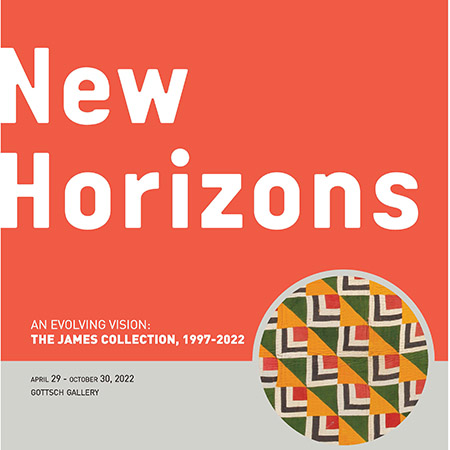
An Evolving Vision: New Horizons
April 29 - October 29, 2022
The James Collection, 1997-2022

In 2022, the International Quilt Museum celebrates 25 years. The 1997 donation of the 1000-piece Ardis and Robert James Collection to the University of Nebraska-Lincoln established the IQM. For the past quarter century, the James Collection has formed the museum’s core, its heart.
The IQM inherited the Jameses’ ambitious concept of what a quilt collection could be: “an absolutely comprehensive collection of quilts from all over the world.” We have also expanded upon it, sharing the collection with the world through research, interpretation, and exhibition. We have gratefully embraced the Jameses’ evolving vision and made it our own.
New Horizons
From the beginning, the International Quilt Museum’s collecting goal has been maximum global representation. The museum’s founding collection, the James Collection, comprises quilts from nine different countries, predominantly the United States. By the time the IQM was 10 years old, our collection’s country count had grown to 24, and by 2012 it was 45. Today, we have pieces from over 60 countries, a number we will continue to grow.
New Horizons presents a sampling of our international collection, a diverse group of textiles from 17 different countries that range from quilted and patchwork garments to narrative appliqué hangings, to plain old bed quilts (that are not at all plain!). In this single gallery, you can travel a world of quilts and learn why they are integral and meaningful to so many different cultures.
April 29 - October 29, 2022
Gottsch Gallery